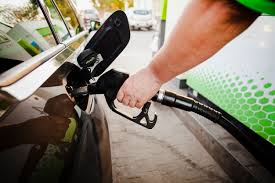
(UNDATED) – U.S. Crude oil prices are the lowest in history, dropping the price at the gas pump.
Professor of economics Dr. Robert Guell at Indiana State University says crude oil is being produced and shipped but not being used because of the COVID-19 pandemic.

For the eighth straight week and now 59 straight days, the national average price of gasoline has dropped, falling 5.0 cents over the last week to $1.78 per gallon on Monday, according to GasBuddy data compiled from more than 11 million individual price reports covering over 150,000 gas stations across the country. The average price of diesel, meanwhile, fell 2.9 cents to $2.49 per gallon.
“With another drop in the national average from a week ago, we’ve made it eight straight weeks of decline, and for the first time in GasBuddy’s 20 year history. Truly unprecedented demand destruction has been dismantling expensive gas prices everywhere,” said Patrick DeHaan, head of petroleum analysis for GasBuddy. “With oil again at new multi-decade lows, we still have room for prices to fall nearly countrywide, though areas with lower prices will see little decline, take Wisconsin for example, while higher-priced states like California have the most room to decline.”
Factories are shut down, residents are sheltered at home and the crude oil is being produced is not being used. COVID-19 is creating a perfect storm for crude oil prices, Guell said.
“We could easily see gas prices at or near a dollar or even below a dollar here in Indiana,” Guell said, “Though our relatively high gas taxes would probably make the set point—the lowest point—just above a dollar.”
Crude oil prices saw additional drop Monday morning, with the soon-to-be-expiring May contract down some 37% to $11.47 per barrel, while the more active June contract was off closer to 10% to $22.10 per barrel. Brent crude oil was seeing an even smaller decline, down 6% to $26.42 per barrel. Oil’s fate has been tied to an OPEC oil production cut agreement that still hasn’t come into force, with oil storage facilities quickly filling up as global production remains some 10-20 million barrels higher than demand. Oil is in strong contango, as demand is likely to begin recovery in June and July. May’s WTI contract is at $11.37 per barrel while June holds at $22.10 and July at $27.25 and August at $29.52 per barrel. January 2022’s contract, meanwhile, holds at $37.22 per barrel, suggesting traders believe the situation will improve greatly by then.
Data from the Energy Information Administration last week highlighted another blowout week for oil and refined products inventories. Crude oil inventories skyrocketed 19.2 million barrels- the single largest weekly rise, ever, while gasoline jumped nearly 5 million barrels, and distillate inventories jumped 6.3 million barrels.
Demand for gasoline remained anemic at 5.08 million barrels per day, while GasBuddy demand figures put the loss around 55-70% by state as millions are staying at home and some now without work. Refineries also pulled back, utilizing just 69.1% of their capacity at a time of year they’re typically north of 90-95%.
At the nation’s gas pumps, prices extended their downward move in every city and state. Over 120,000 gas stations are selling gasoline under $2/gal Monday, with nearly 40,000 stations under $1.50/gal. The most common gas price across the country stands at $1.69 per gallon, down 10 cents from a week ago, followed by $1.59, $1.79 and $1.49. The average cost at the priciest 10% of stations stands at $2.78 per gallon, down 7 cents from a week ago, while the lowest 10% average $1.19 per gallon, down 5 cents from a week ago. The median U.S. price is $1.69 per gallon, down 5 cents in the last week and about 9 cents lower than the national average.
Guell says this should all resolve itself within two months once the economy opens back up when more people hit the roads and return to factory jobs.



